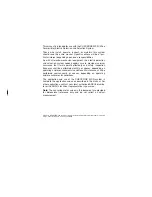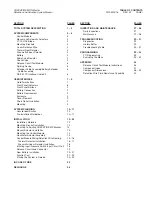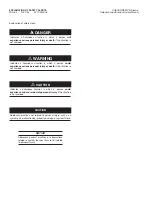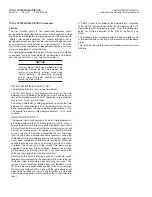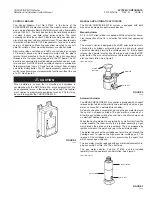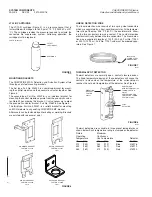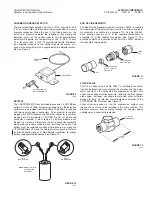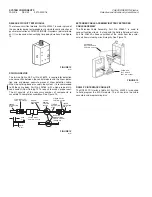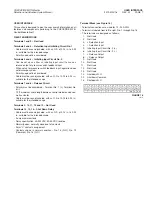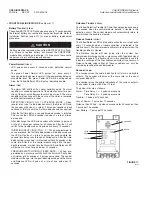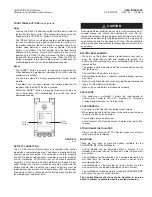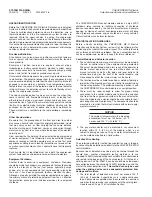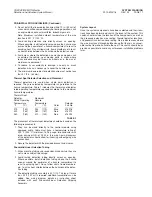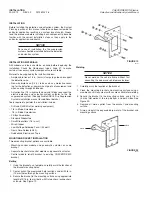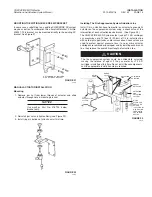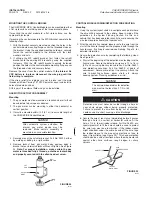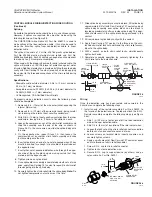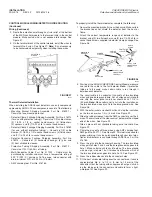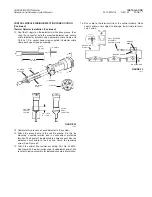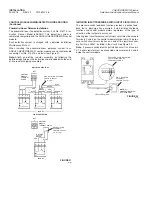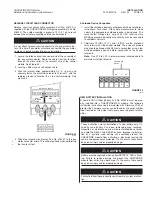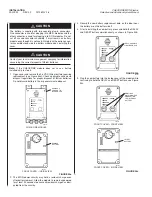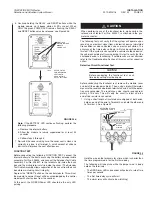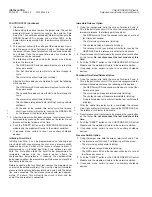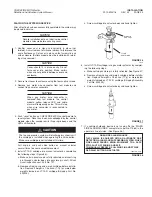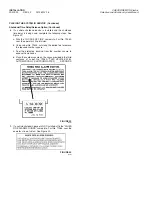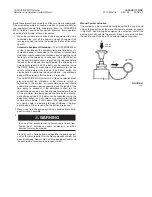
HAZARD IDENTIFICATION
Before the CHECKFIRE MP-N Electric Detection and Actuation
System is installed, the hazards to be protected must be identified.
These hazard locations determine where the detection wire or
thermal detectors and the fire suppression system nozzles are
required. While the agent nozzles in existing fire suppression
systems will point out the hazard areas, the following information
should still be reviewed to best determine detection requirements.
If an entire fire suppression/detection system is to be installed, this
information is vital in determining proper placement of discharge
nozzles and detection devices.
Fire Hazard Definition
A fire hazard is any area where an ignition source (high tempera-
ture or sparks) and fuel (flammable materials) may be found in
close proximity.
Examples of ignition sources are engines, exhaust piping,
turbochargers, battery compartments, electrical system equip-
ment, torque converters, transmissions, hydraulic pumps, parking
brakes, and friction from debris packed around parts.
Occasionally other components may reach high temperatures due
to malfunction. The potential danger from these components must
also be examined during hazard identification. A parking brake left
engaged is an example of a potential high temperature source.
Temperatures in excess of the detection wire or thermal detector
ratings will cause the detection system to activate thereby actuat-
ing the fire suppression system.
The above mentioned heat sources can cause fire when they
come in contact with flammable materials such as leaking fuel:
either broken fuel lines, slow leaks, broken hydraulic lines, or a
ruptured fuel tank. Type of Class A materials are part of the vehicle
itself such as electric wiring insulation, padding, plastic parts, the
packages on the vehicle, or debris due to poor maintenance.
These materials can contribute to the rapid buildup or spreading
of fire.
Other Considerations
Be aware that the propagation of fire from one area to another
may cause a hazard to be larger than originally determined. Liquid
fuel may spray, splash, or flow carrying the fire some distance
from the starting point. Radiation, sparks, or conduction through
metal can carry heat to an area where the danger of fire wouldnʼt
normally exist.
Also, consider the fire history of the equipment being protected or
of similar equipment. This information may be available through
company records or vehicle operators may have had first hand
experience enabling them to identify the locations of previous fires
as well as special hazards such as a hydraulic hose that frequently
ruptures.
Each hazard that is identified must have both fire suppression
system fixed nozzles and detection wire or thermal detectors.
Equipment Shutdown
Another factor to examine is equipment shutdown. Provisions
should be made to shut down any components that could possibly
add to the intensity of the fire (fuel pumps, hydraulic pumps,
engine, etc.) or any components that could possibly re-ignite the
fire once it has been suppressed (battery, electrical system).
Although a properly installed fire suppression/detection system is
the primary means of protecting equipment from fire, an effective
fire protection package also includes provisions for equipment
shutdown.
The CHECKFIRE MP-N control module contains 3 amp 30VDC
shutdown relay contacts to facilitate connection of shutdown
devices recommended by the vehicle manufacturer. Example:
opening or closing of coolant over-temperature alarm will bring
about properly sequenced engine shutdown on many vehicles.
Consult vehicle manufacturer for details.
PRE-INSTALLATION GUIDELINES
Before actually installing the CHECKFIRE MP-N Electric
Detection and Actuation System, review all of the following infor-
mation and plan (sketch) the system layout. This will help to avoid
any unforeseen installation problems. Once an acceptable layout
has been determined, record and keep it for future reference.
Control Module and Actuator Location
1. The control module and manual actuator must be mounted in
the cab or control area of the equipment being protected.
They must be positioned within arms reach of the operator to
enable manual operation of the red strike button on the
manual actuator as well as the delay and reset buttons (to
extend time delay) on the front of the control module, and
close enough so that the internal alarm can be heard.
2. The location must be suitable for bolting or welding if bolting is
impractical. The mounting surface must be flat to avoid strain on
the mounting bracket. The preferred mounting position is with
the CHECKFIRE MP-N control module in an upright position.
3. There must be room enough to allow for proper wiring
connection to the control module and to install the actuation
line from the fire suppression system to the manual actuator.
Also, the module and actuator should be accessible for peri-
odic inspection and maintenance. The components should be
mounted in a location that will not interfere with normal equip-
ment maintenance.
NOTICE
The ambient temperature in the mounting
environment must not fall below –40 °F
nor exceed 140 °F (–40 to 60 °C).
4. The gas motor actuator can be mounted in any convenient
location within 10 ft. (3.1 m) of the module, which is not
subject to damage or abuse. The gas motor actuator bracket
can be welded or bolted to a rigid surface.
Detection Wire Routing
The preferred method for routing linear detection wire is to begin
by connecting the detection wire directly to the CHECKFIRE MP-N
control module.
Because linear detection wire need only be routed through the
hazard area, another acceptable routing method is to use
stranded 16 AWG jacketed wiring connected to the control module
and routed to the beginning of the hazard area(s). At that point, a
splicing device, Part No. 428375, can be used to make the proper
connection between the stranded 16 AWG jacketed wire and the
start of the linear detection wire.
This method can only be used
when the splicing device can be adequately protected from
damage and moisture.
1. The total length of detection wire must not exceed 100 ft.
(30.5 m). If possible, it should be run in a single continuous
loop. Splices are acceptable when they are kept to a minimum
and when they are made in accordance with the splicing tech-
nique found on Page 15 of Installation Section.
SYSTEM PLANNING
PAGE 10
REV. 02 2012-MAY-18
CHECKFIRE MP-N Electric
Detection and Actuation System Manual

